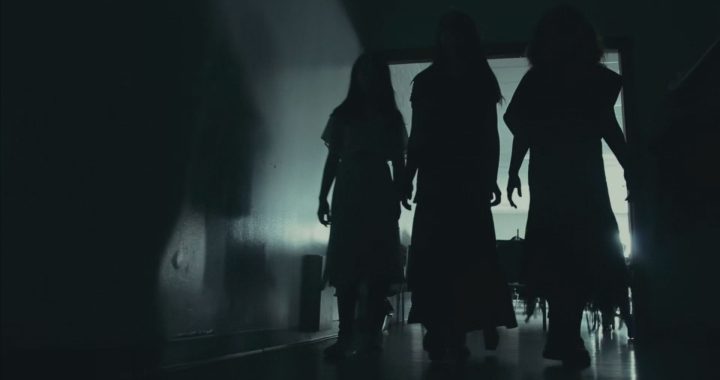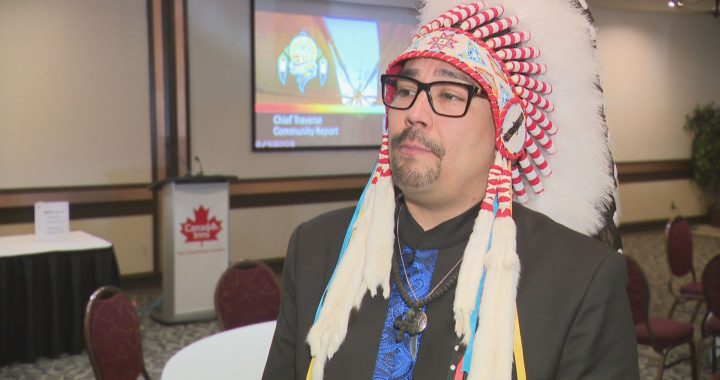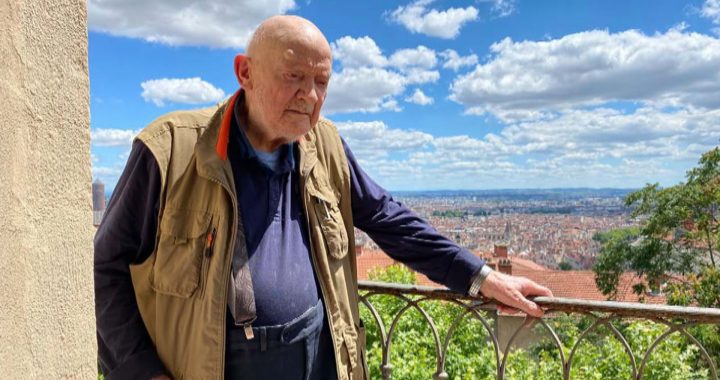In Haines Junction, Yukon, the smell of cedar fills the air.
After two months of work, a 10 metre dugout canoe is being turned right side up.
It’s a cause for celebration.
“Hoo-ha!” yells master carver Wayne Price as he rattles his hands on the wood.
“Hoo-ha!” his small group of apprentices yell back.
Price is no stranger to the ancient art of traditional Tlingit dugout canoes. This is the thirteenth dugout he’s helped lead – seven of which are still in the water today.
Thanks to experience, he says rolling a log that’s around 6,800 kg isn’t as hard of a feat as you would think.
“My beautiful wife Sherry gave me a seven-tonne handyman jack for Christmas and that takes all the lifting out of it,” he smiles.
“It’s all a matter of weight and balance and lifting in the right place.”
The red cedar used for the project was sourced from Prince Wales Island in southeast Alaska and is estimated to be 450-years-old.
Price says it’s important to honour the ancient stand tall.
“The western red cedar gave its life for us to take it, to bring it here, carve it, work on it and give it a new life,” he says.
Healing dugout
Price is a self-taught carver as well as an assistant professor of northwest coast Native arts at the University of Alaska Southeast in Juneau, Alaska.
He learned the ancient art from studying traditional Tlingit dugouts.
He was hired by Champagne and Aishihik First Nations’ (CAFN) community wellness department to teach the ancient Pacific northwest coast artform to a handful of apprentices, most of them young adults, so they can develop skills and job training.
Price describes the dugouts as history coming back to life. Before the settlers came to the Pacific northwest, he says there could be as many as 60 dugouts in one village.
They’re also a source of healing, something Price knows firsthand.
Many years ago, he struggled with drugs and alcohol.
During recovery in a sweat lodge he says the Creator instructed him to make healing dugouts and totems.
“And I said, well, I’ve made a lot of dugouts and a lot of totems, how do you make a healing one? And the Creator said as I was carving the dugout, ‘each chip represents a life lost to alcohol and drugs in Indian country, and with all the chips that come off the dugout there won’t be enough.’”
It’s something Price has honoured ever since.
He says this healing dugout is for those struggling with addictions, the COVID-19 pandemic and the mass discovery of children’s graves at former residential school sites.
He notes wood is powerful medicine for those in pain – and it works.
“I’ve seen many miracles for being at the helm of master carver digging dugouts. The Creator told me I would see it work and I’ve seen it work a lot. I’m not afraid to say that I’m changing some lives, most definitely.”
‘Pushed me to work my hardest’
For apprentice Laurence Patterson-Smith, the opportunity to work with Price has been invaluable.
Prior to the project, the 21-year-old from Carcross/Tagish First Nation didn’t know anything about working on dugouts.
Now, he feels more connected to his culture.
“It’s really important in our culture to know this type of stuff, and it’s something that’s slowly disappearing. But with Wayne travelling around teaching everybody, I don’t think it will disappear now,” he says.
He admits that learning the ancient artform hasn’t been easy.
“I think the most difficult thing was not getting frustrated or mad at the piece you’re working on and to have patience with it. There was a lot of times I had to get up and walk away.”
However, he says Price’s wisdom helped him keep centred – and has even inspired him to continue with carving.
“He always said I was doing a good job and to keep working. Starting on this job, I think it really pushed me towards carving. I think I’m really going to continue it.”
Cara McCuaig, 19, who is a CAFN citizen, says working with Price challenged her to get out of her comfort zone.
“It really pushed me to work my hardest…There has been many times where I’ve just wanted to give up, but I found it inside me to keep going. I’m happy I did,” she says.
She adds the experience has been a healing one.
“Being with someone so wise and caring, and just reconnecting with the cultural history has been changing me in so many ways, more than I can explain… I felt alienated and misplaced before, but with this much love, knowledge and support from my peers, I feel like I have a place now.”
Dugout will eventually hit the water
This year’s work on the dugout finished last week. Price will travel back to Haines Junction next May to complete the job and the dugout is expected to be fully finished in June.
He and others will then travel on the dugout from Haines, Alaska to Juneau for a Tlingit gathering and celebration.
Price says the apprentices have also committed to going on 160 km trip on the dugout as part of his North Tide Canoe Kwan group. Members have to design their own paddle and pledge to a drug and alcohol-free life.
Price says he’s looking forward to the journey.
“It’s proven to me many times that the Pacific northwest culture and art has been our ally since 10,000 years, since time immemorial. Why should we ever doubt it? It’s going to take care of us today, take care of us tomorrow, and into the future as well.”









